Soil temperature is a great tool to use for planning planting, at any time of the year. It is especially helpful for fall and spring planting.
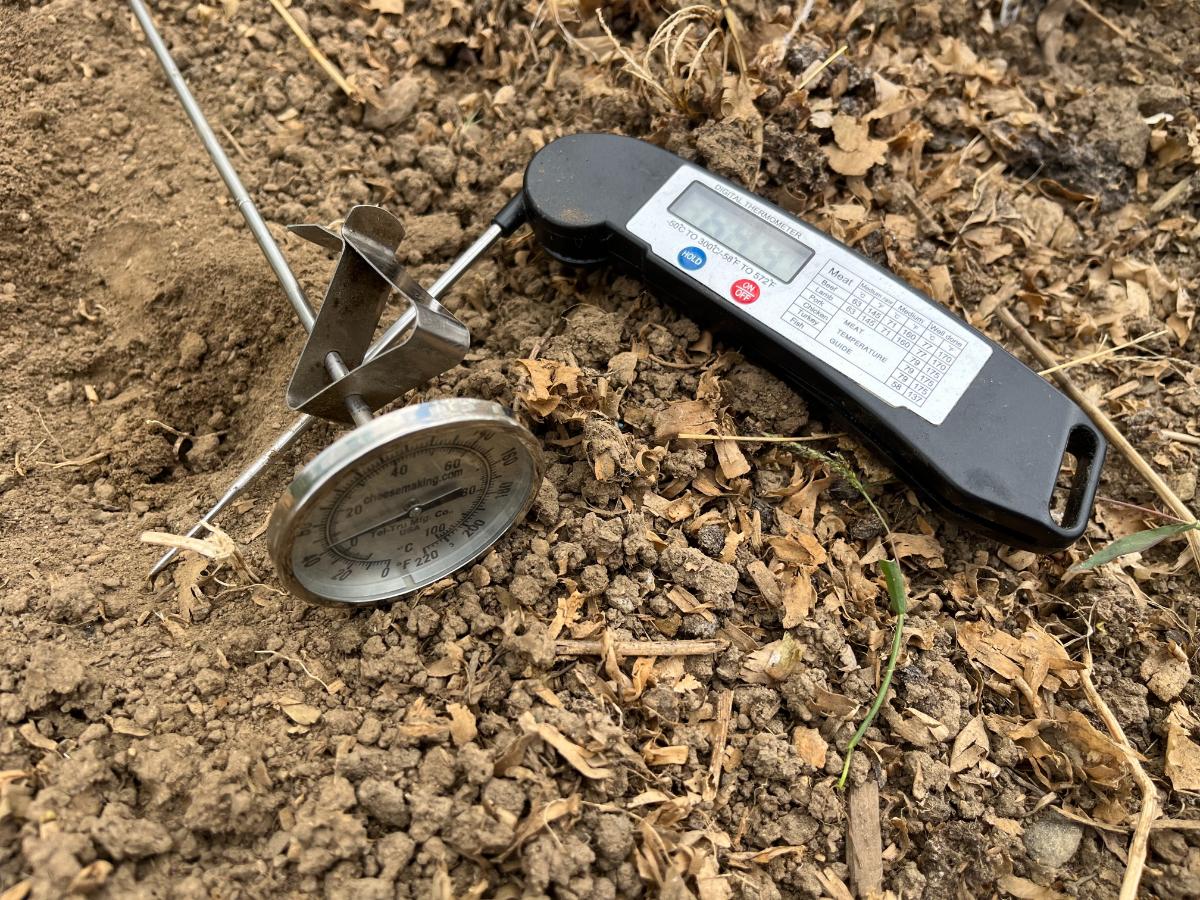
Taking a soil temperature is easy. The most important thing to know is where to take the temperature.
Jump to:
- Know your soil temperature, know your planting possibilities
- How to Take Soil Temperatures to Plan Planting Times
- What you need to take a soil temperature reading
- Taking the temperature of your soil: How to
- Journaling makes soil temperature taking more meaningful for gardeners
- Some things your soil temperature can tell you
- Soil temperature and stability are good planting tools
Know your soil temperature, know your planting possibilities
There are known and established ranges of soil temperature in which we know plants will grow. These ranges are much lower than what many of us think. Even some vegetables can grow in soils as low as 35 degrees! (Fahrenheit, of course)
Perennials can be planted and grown in very low soil temperatures, only several degrees above freezing. Perennials will grow roots in soils at temperatures down to 40℉ (4.44℃) and lower!
The soil warms slower in the spring and stays warm longer in the fall than the air does. It is a much more stable measure of potential plant growth.
Soil temperatures do not fluctuate daily the way the weather and ambient air temperatures do.
It can be a great indicator of when you can or should plant all sorts of plants at all times of the year -- spring to summer to fall, and perhaps even in winter, depending on where you live.
How to Take Soil Temperatures to Plan Planting Times
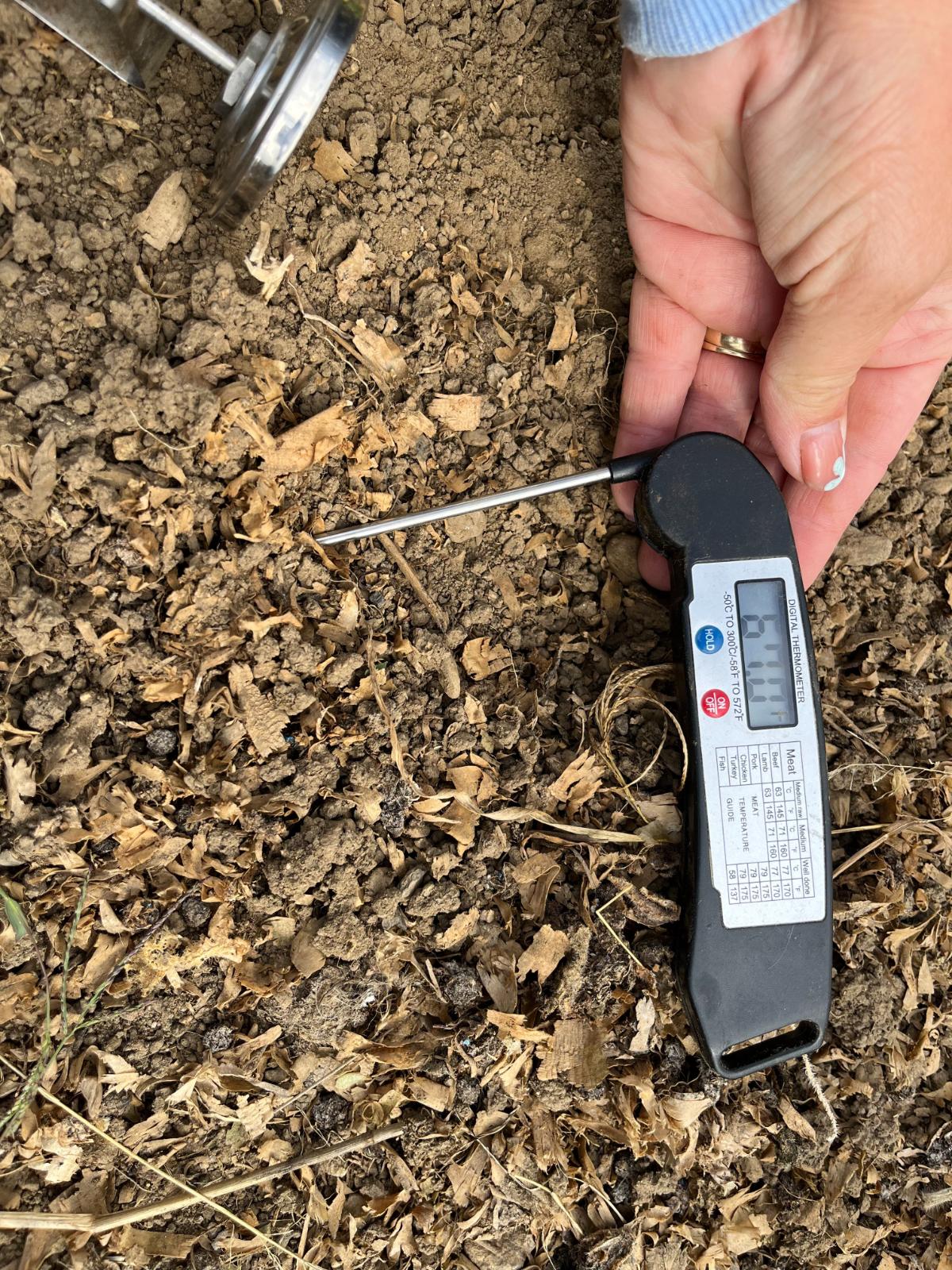
Taking soil temperature isn’t hard. But if you want the reading to be meaningful for what you’re planting, you’ll need to do it right.
What you need to take a soil temperature reading
You can use almost any type of probe-style thermometer to take a soil temperature reading. There are thermometers that are labeled and sold specifically for use as soil thermometers, but they aren’t really much different than a typical probe thermometer (if at all).
A kitchen thermometer, such as a meat thermometer or candy thermometer, will work just as well as a “soil” thermometer.
The only thing you need to look for is the temperature range the thermometer can read. Make sure the thermometer can read at both high and low temperatures (most digital thermometers will have a large range).
You will likely want a thermometer that can read down to freezing (even below) and up to 100℉ or higher ((37.8℃).
Think about the average temperatures your location experiences. Then try to find a thermometer that will beat the air temperature by 20 degrees or more -- because in the heat of things, that’s the range the soil temperature can vary by easily!
You will want either a dial or digital reader on the thermometer that you can read with the thermometer in the ground. This is so it can stay in place and the temperature reading isn’t distorted when you pull the thermometer out of the ground to read it.
Taking the temperature of your soil: How to
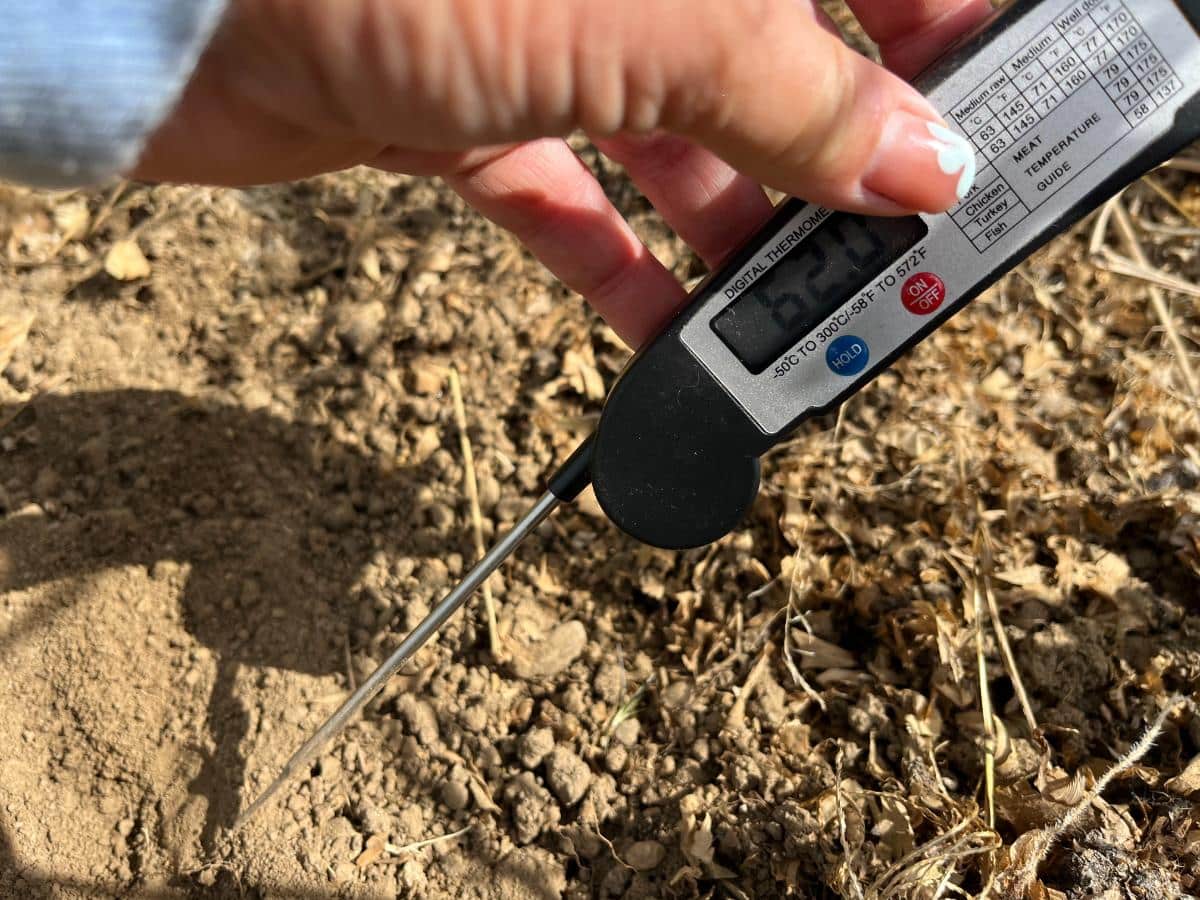
- Sink the thermometer into the soil.
- If there is a “dimple” or thinner point at the end of the probe, the thermometer should be sunk past that point for the most accurate reading.
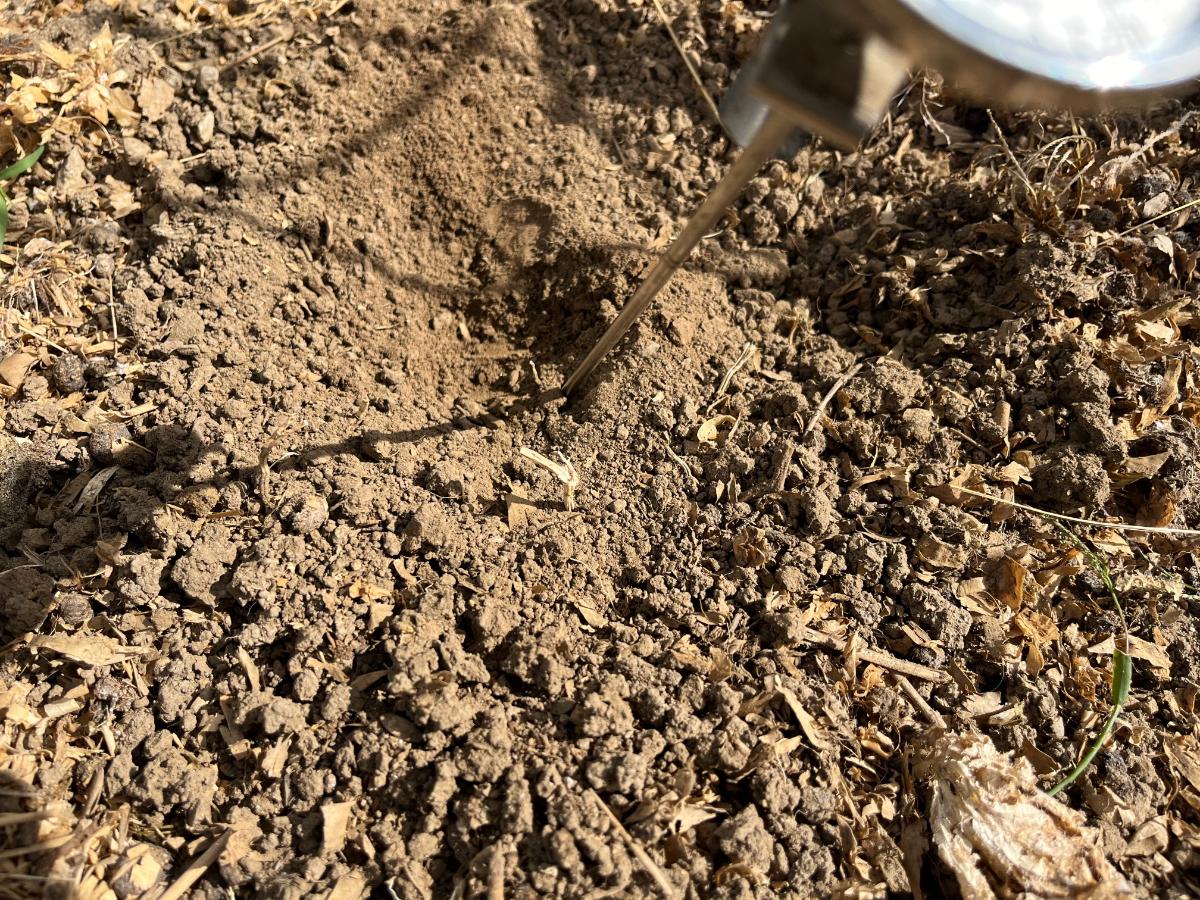
- Choose the right depth for the type of seed or plant you are planting.
- The average “right” depth for soil temperatures is between two and four inches.
- Leave the thermometer in the ground for three to four minutes so it can stabilize and get an accurate read.
- Read the thermometer while it is still in the ground.
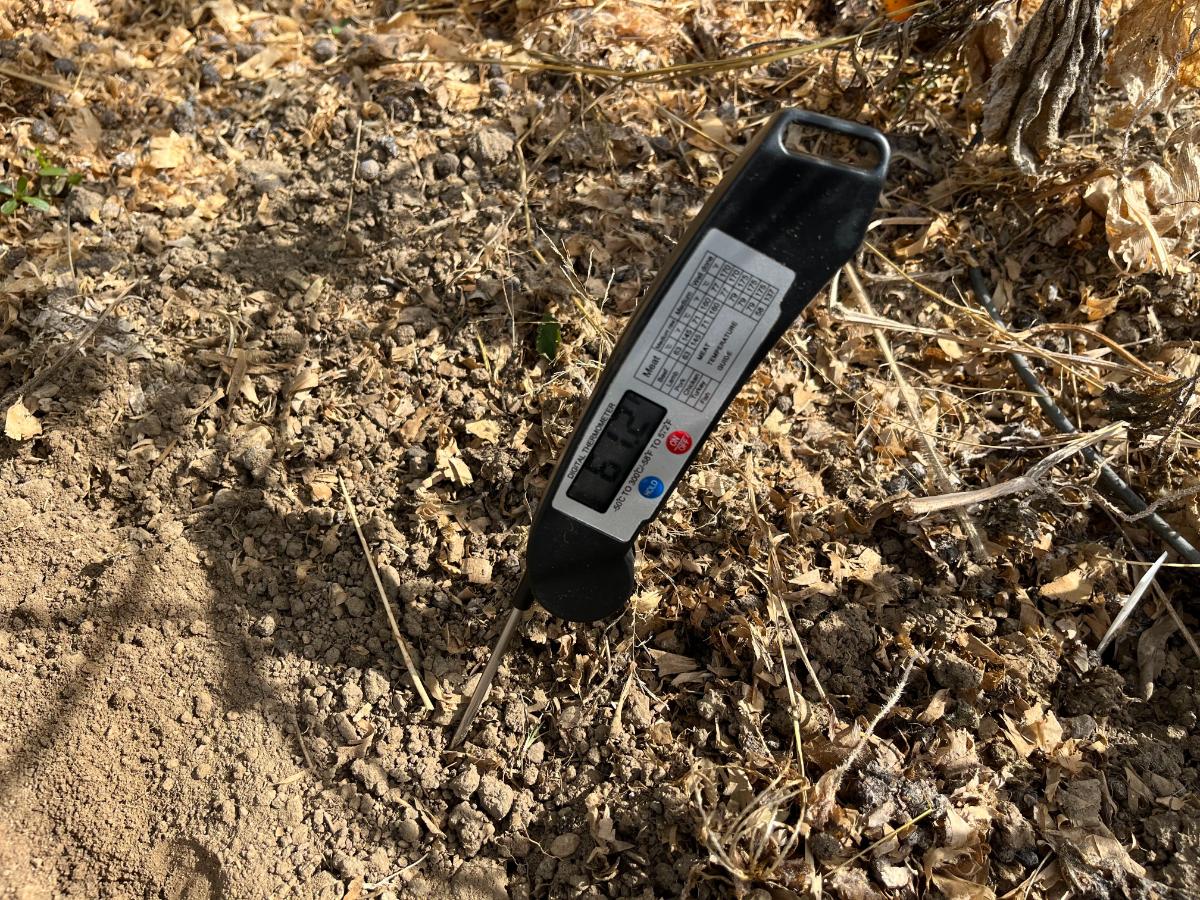
- Record the temperature.
How deep into the ground should you measure?
What matters most for seeds, plants, and planting is that the temperature is taken at the right depth.
The right depth is equal to the depth at which you’ll be planting the plants or seeds.
You may need to take several readings if you are planting several different things. Take a reading for each plant or seed depth for what you’re sowing.
- For seeds, measure at a depth of one-half inch to one inch.
- If you have seeds that need to be planted deeper than an inch, sink the thermometer down further to the suggested planting depth.
- A good rule of thumb for planting seeds (and measuring soil temperature) is to go twice as deep as the seed is wide; two to three times the seed’s width is a good measure.
- For bulbs, you can use the rule of two to three times the bulb’s size, too.
- For transplants, the right depth is the depth where the roots will be planted to. Generally, this is the depth of the pot -- to the bottom of the pot. So, for a pot that is four inches tall, you should measure four inches down into the soil.
- Learn more about determining the best planting depths here.
What time of day should you read soil temperatures?
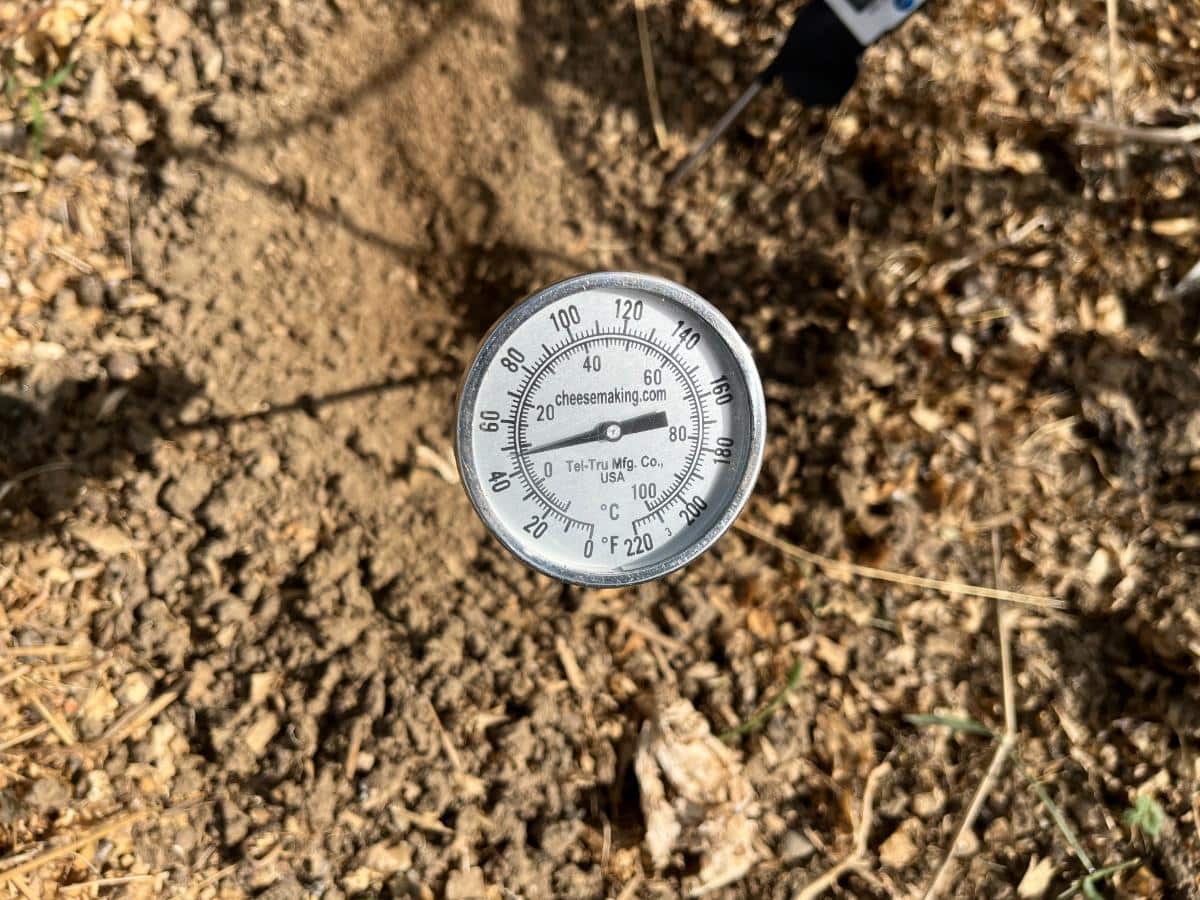
It’s best to take the temperature of your soil in the morning. Wait long enough for temperatures to stabilize, and take the reading before the sun gets too hot and bakes the surface of the ground.
The recommended time of day to take a soil temperature reading is around 9:00 in the morning.
Journaling makes soil temperature taking more meaningful for gardeners
Consider keeping a journal of the soil temperatures that you take. This will give you an archive of historical data specific to your garden and location. Over time, you can use this to compare, contrast, see changes and trends and to help you plan future planting dates for all seasons (spring and fall especially).
Some things that are useful to record are:
- Date(s)
- Soil temperature
- Depth of measurement
- Air temperature
- Locations where temperatures were taken
- Soil type
- Soil moisture (wet, dry, moist, average…)
- Plants planted at different times of year and temperature
- Plant performance and/or longevity
Here’s an interesting guide to soil temperature with a good activity and experiment for kids; but truth be told, it’s a great activity and tracker for adult gardeners, too!
Some things your soil temperature can tell you

There’s a lot of useful information to be had by taking soil temperatures and tracking trends, things like:
- If soil temperatures are climbing or falling
- If increases indicate good planting times, even if the weather is unstable or unpredictable
- If the soil is warm enough for seeds to germinate
- If soils are cool enough for root growth
- Whether you should wait longer for the soil to warm up for seeds or plants, even if the calendar says it’s time to plant
- If the soil is below the ideal temperature, wait a week and measure the soil temperature again (or if it’s too high -- because many seeds and plants will not germinate or thrive in high soil temperatures, either!)
- If the soil has cooled enough in the fall for things like fall garlic, onion, or bulb planting for overwintering bulbs
If compared to plant performance, you may gain some valuable information about what plants do best when planted at certain times of the year or at certain soil temperatures.
The results of your soil temperature taking can also tell you if your soil is in the optimal range for planting different plants, flowers, fruits, vegetables, or crops.
Soil temperature and stability are good planting tools
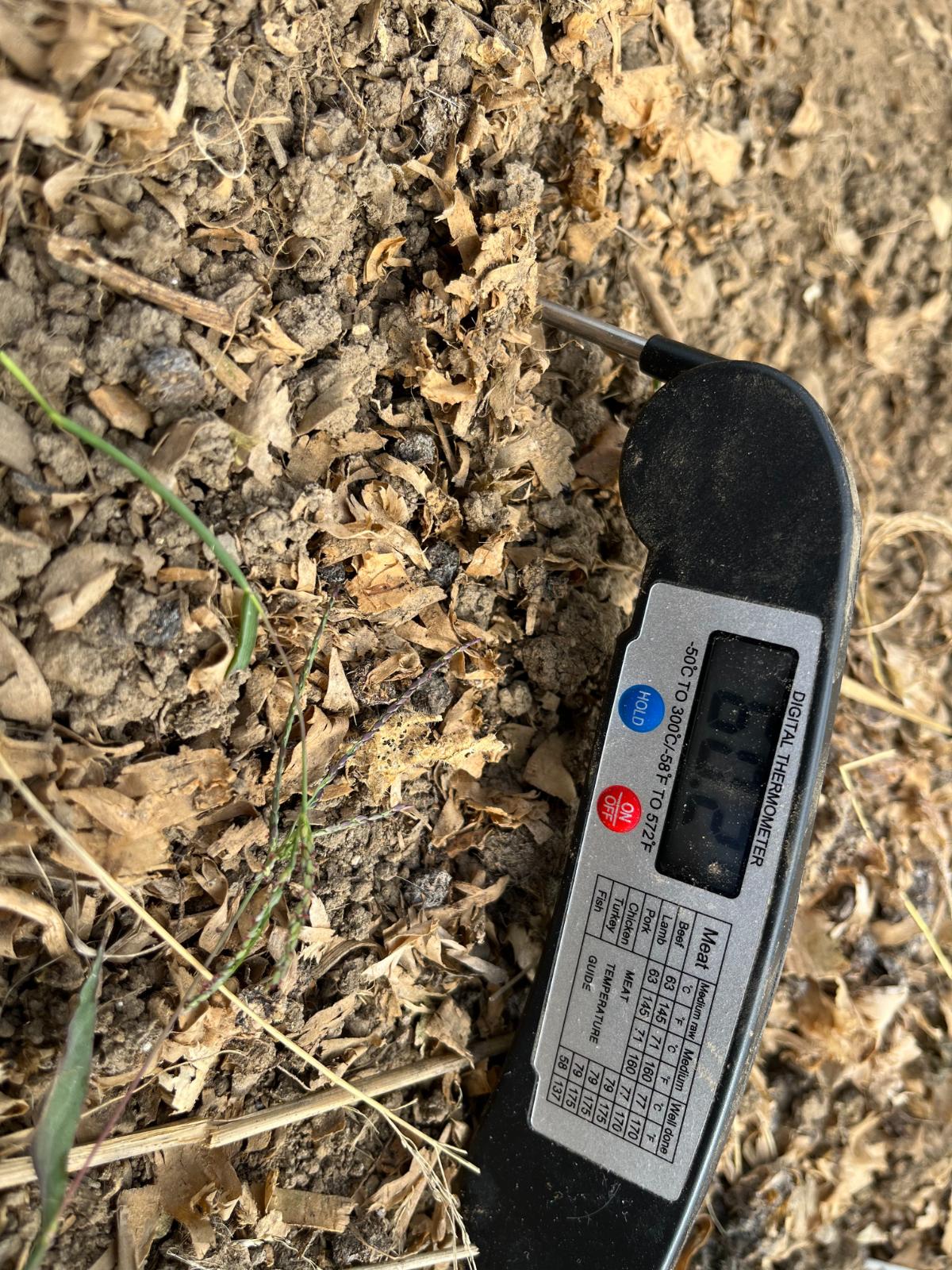
As home gardeners and landscapers, we tend to think more about things like zone, frost, and cold hardiness. Soil temperature is directly related to some of these measures.
But soil temperature is a highly useful tool with or without these traditional measures. Farmers and commercial growers have been using the science of soil temperature to their advantage for years.
It’s time for home gardeners to do more of this, too. Take the guesswork out of unpredictable and changing seasons and weather, and plan your planting for seed and plant success!
It’s a lot easier than trying to predict forecasts and weather these days!

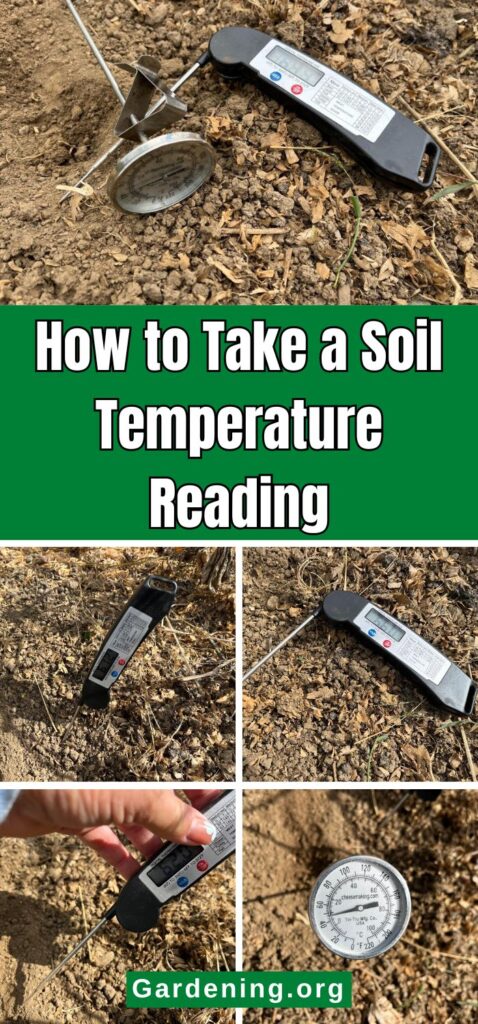
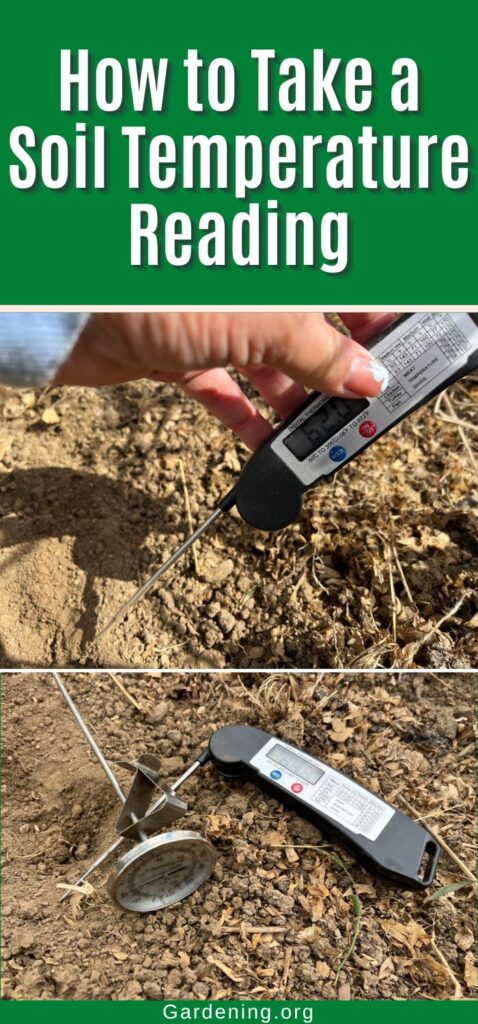
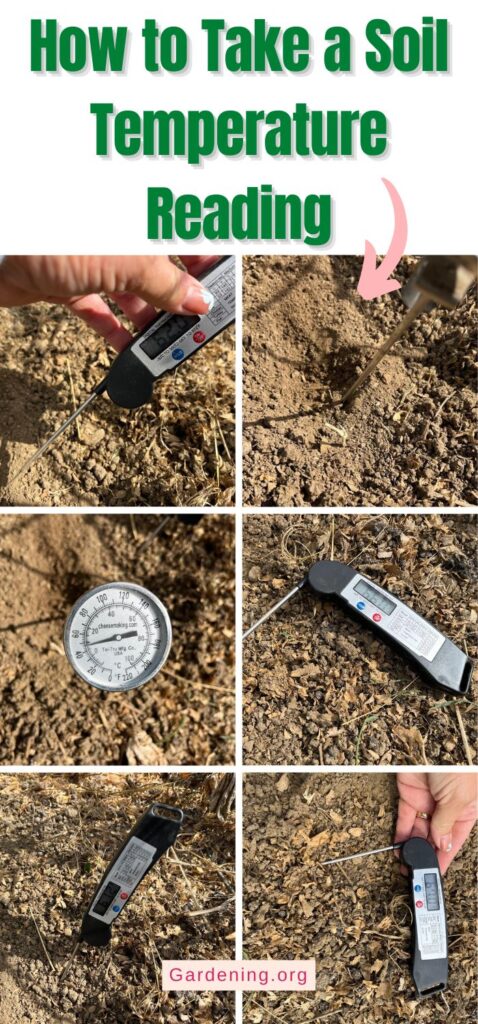

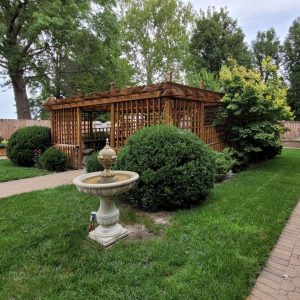
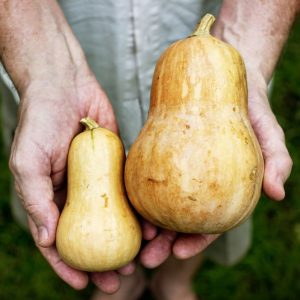
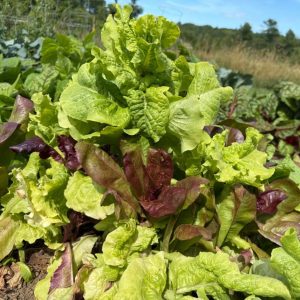
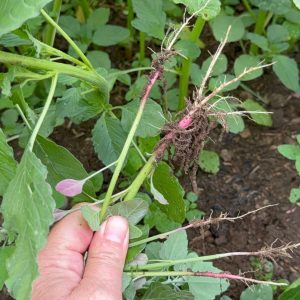
Leave a Reply